Preface
As a leader in enterprise-level technology frameworks, Spring has not missed the outlet of microservices. From its first day of appearance, it is destined to be extraordinary. With its powerful abstraction capabilities and technical integration capabilities, Spring combined with Netflix's mature open source service suite has become the most popular microservice technology integration solution as soon as it appears.
Spring Cloud also inherits the style of Spring as always, considering almost all the functions of microservices. In addition, the componentized thinking also provides more flexibility for the implementation of enterprise microservice architecture technology. Enterprises can not only quickly establish their own microservice technology system through Spring Cloud, but also empower existing technical solutions by integrating Spring Cloud technology components.
This article is exquisite, practical and quick to get started, assembled by the experience of senior Spring Cloud practitioners!
This article combines component application and principle analysis, and integrates microservices and DevOps practices with a comprehensive case, and leads everyone to understand springcloud!

table of Contents
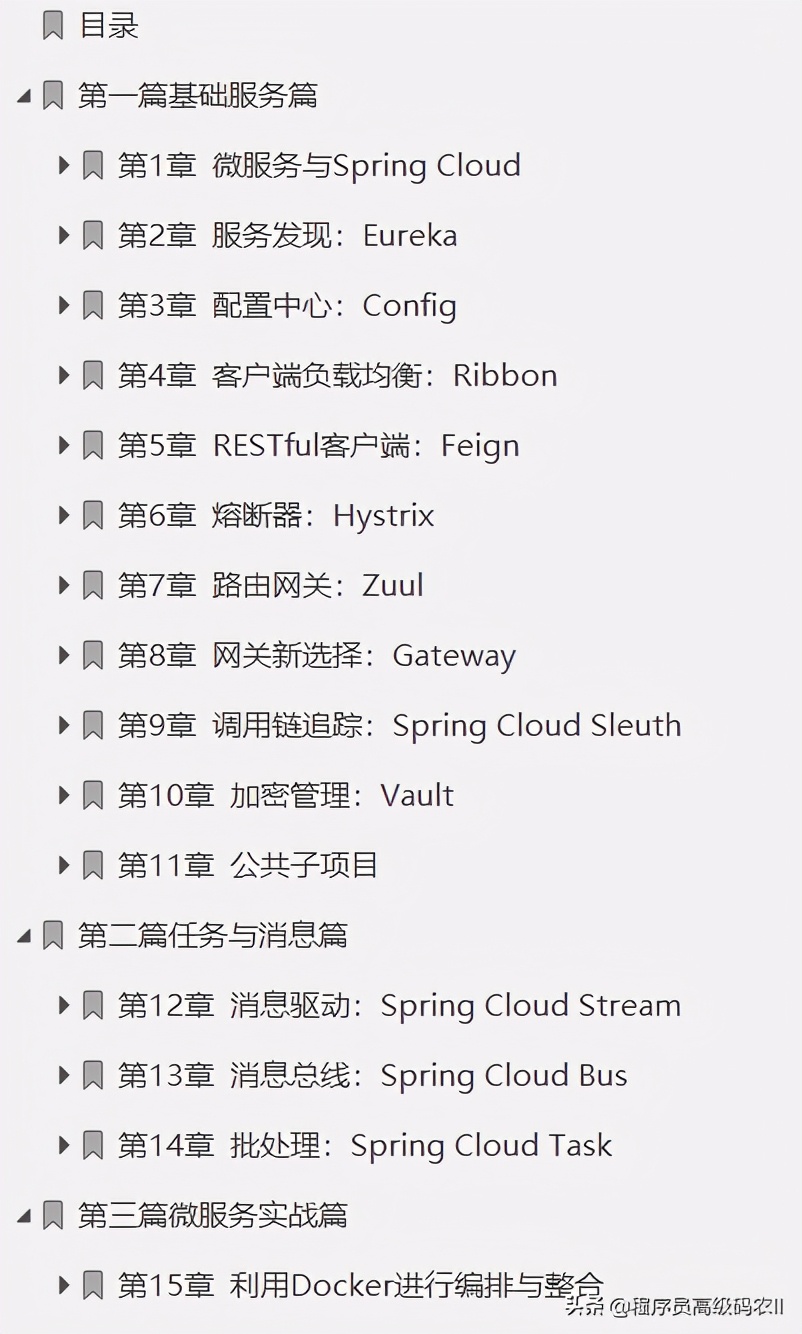
main content
Chapter 1 Microservices and Spring Cloud; Microservice architecture splits an application into multiple independent services with business attributes, each service runs in a different process, and lightweight communication between services The mechanisms cooperate and cooperate with each other to provide business value to end users. Therefore, the microservice architecture emphasizes a highly autonomous architecture model of independent development, independent testing, independent deployment, and independent operation. It is also a more flexible, open, and loose evolutionary architecture.
I hope that through the definition, core features, advantages and disadvantages of microservices introduced in this chapter, as well as a comprehensive introduction to the microservice implementation framework Spring Cloud, everyone can have a comprehensive understanding of microservices and Spring Cloud. The following chapters will introduce them in detail one by one. The various components of Spring Cloud.
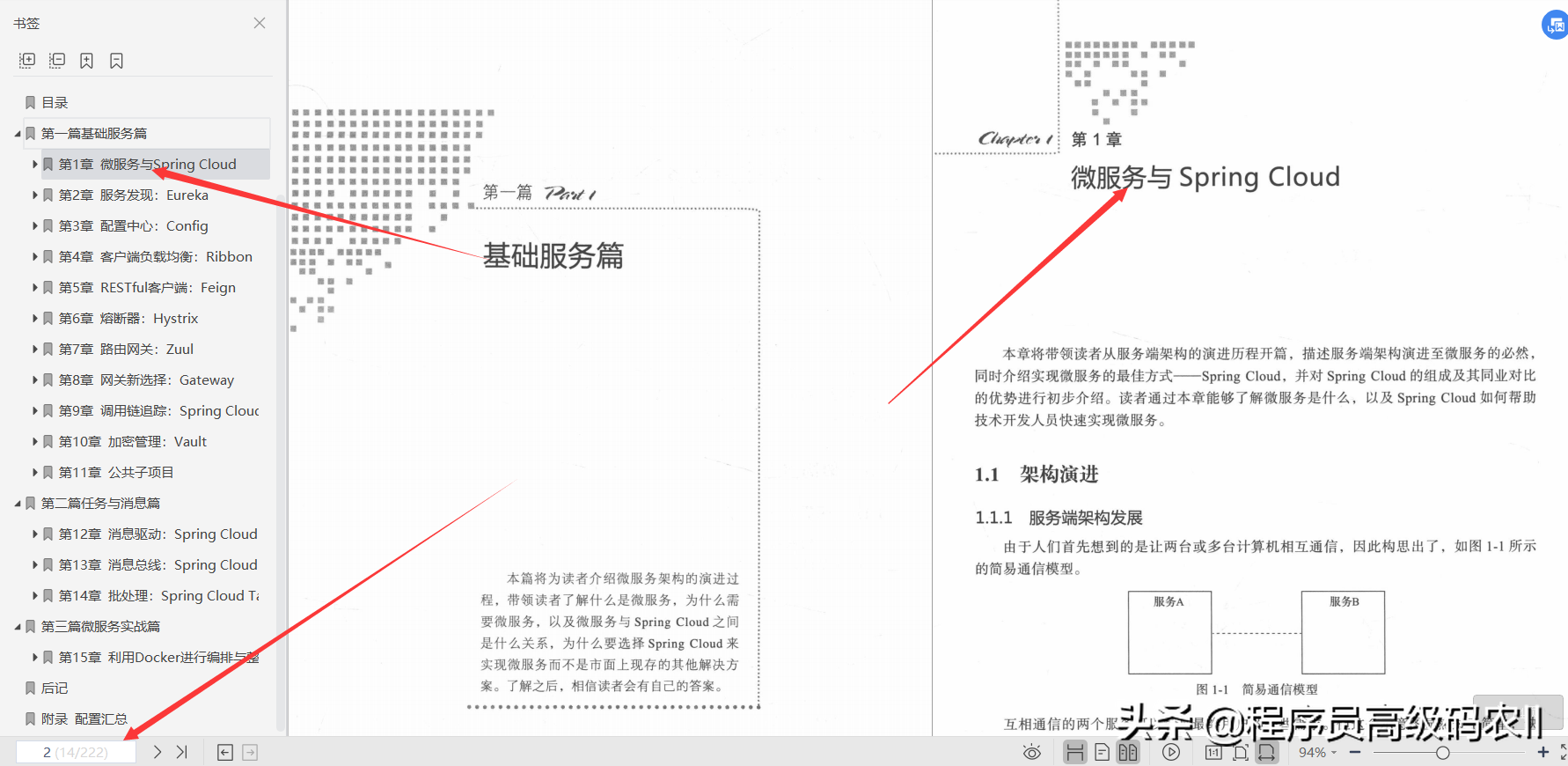
Chapter 2 Service Discovery: Eureka; This chapter explains the working principle of Eureka components in detail, and introduces the use steps of Eureka's service providers and service callers with examples. In the Advanced Scenarios chapter, we have deeply explored the various solutions and custom scenarios of using Eureka in various scenarios. The next chapter begins to learn how to use the Config component to dynamically configure Eureka and other components.
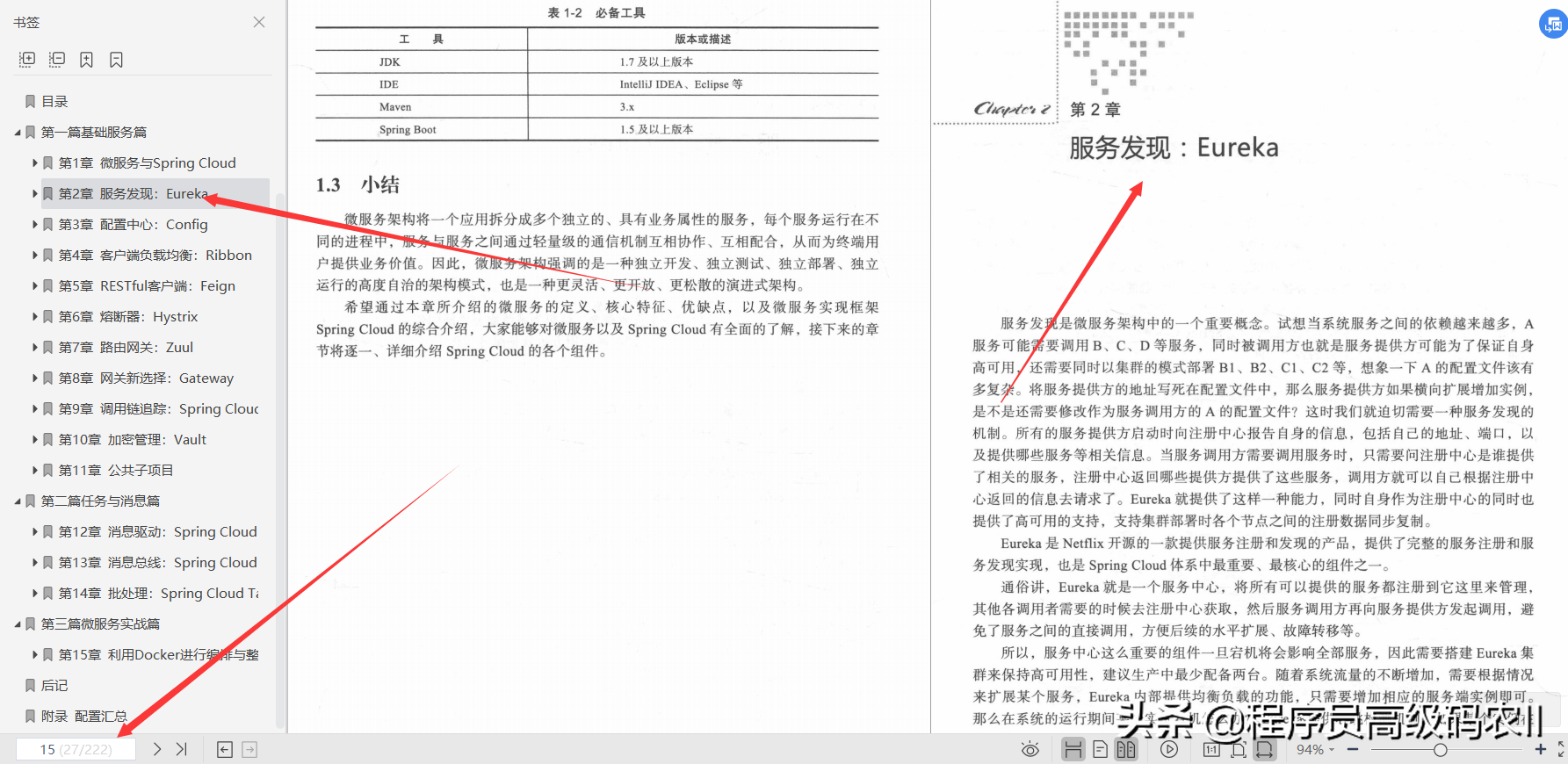
Chapter 3 Configuration Center: Config; With Spring Cloud Config, you can implement dynamic parameter configuration and hot validation and other related operations for any integrated Spring program, so as to achieve program and configuration isolation, decoupling between coding and environment Coupling. This is also required by the microservice architecture. Next, we will enter the next chapter to start learning about the calls between servers.
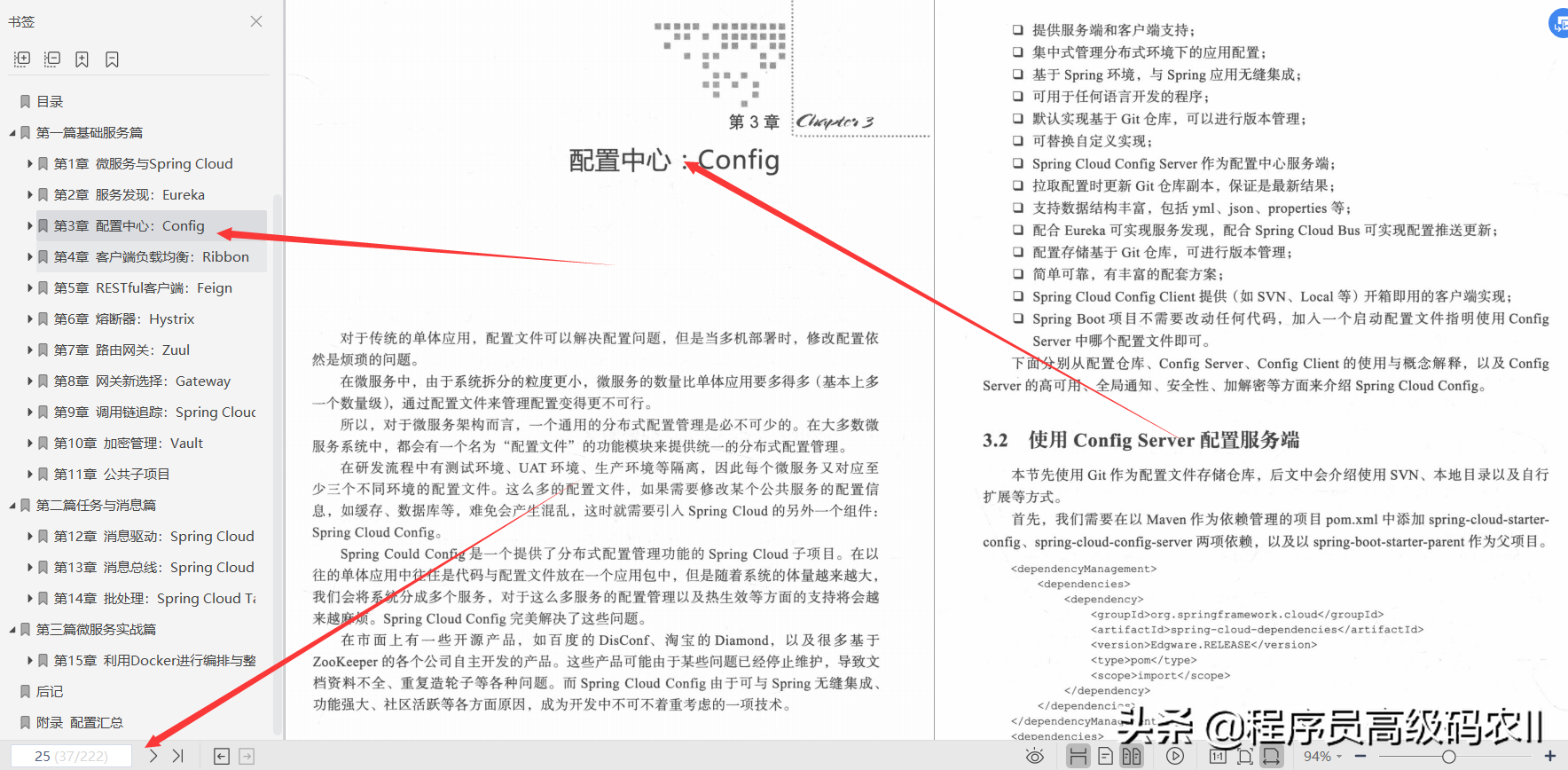
Chapter 4 Client Load Balancing: Ribbon; Through the study of this chapter, you can understand that Ribbon as a load balancer plays an important role in high performance and high availability. Of course, as an independent component, it can also be integrated into any scene that requires load balancing. This requires an in-depth understanding of Ribbon. I believe that readers should not be a difficult thing to learn through this chapter.
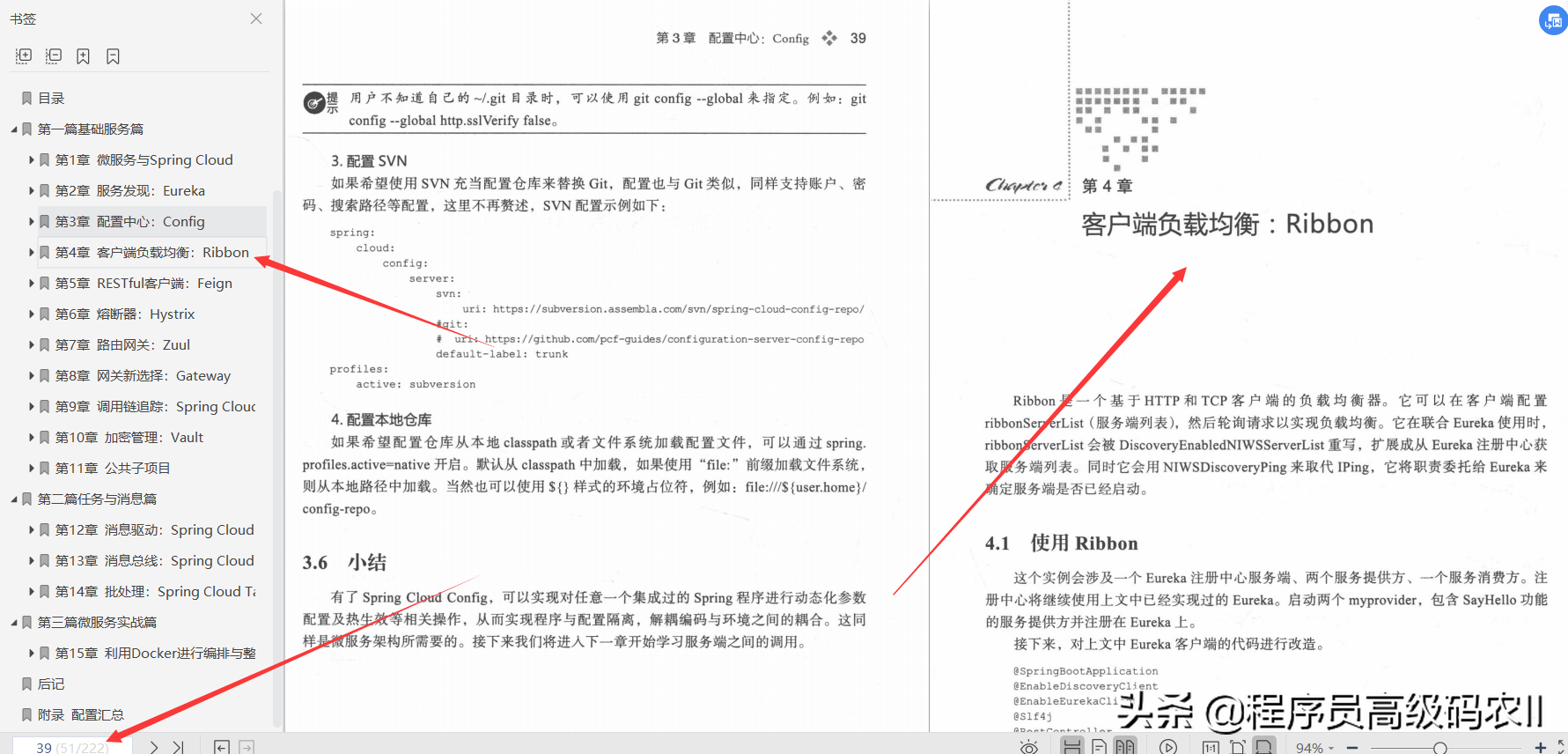
Chapter 5 RESTful Client: Feign; Feign greatly simplifies the amount of development code for HTTP calls, improves coding friendliness, and enables users to develop friendly interfaces instead of rigidly developing HTTP parameters. At the same time, Feign's perfect support for Ribbon, Hystrix, etc. is also its natural advantage. Next, introduce Hystrix's ability in fusing.
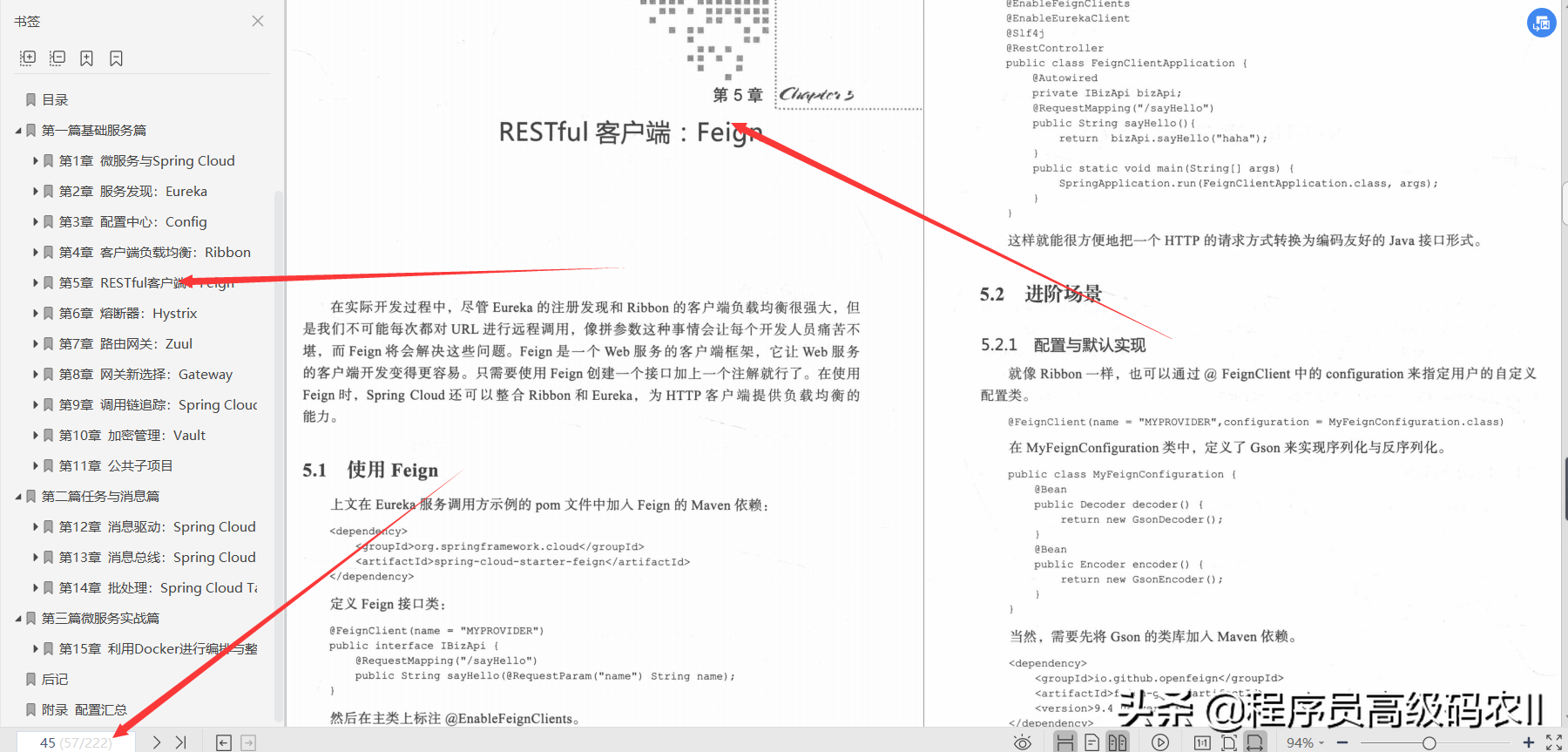
Chapter 6 Fuse: Hystrix; Hystrix to distributed is like a dam to Hongchuan. When enterprise-level services reach a certain level, Hystrix, which can be flexibly configured and stable, is indispensable. At the same time, its monitoring dashboard is very detailed and friendly, so that it can be put into use without secondary development or a little secondary development. After introducing Hystrix, we will introduce another heavyweight component Zuul.
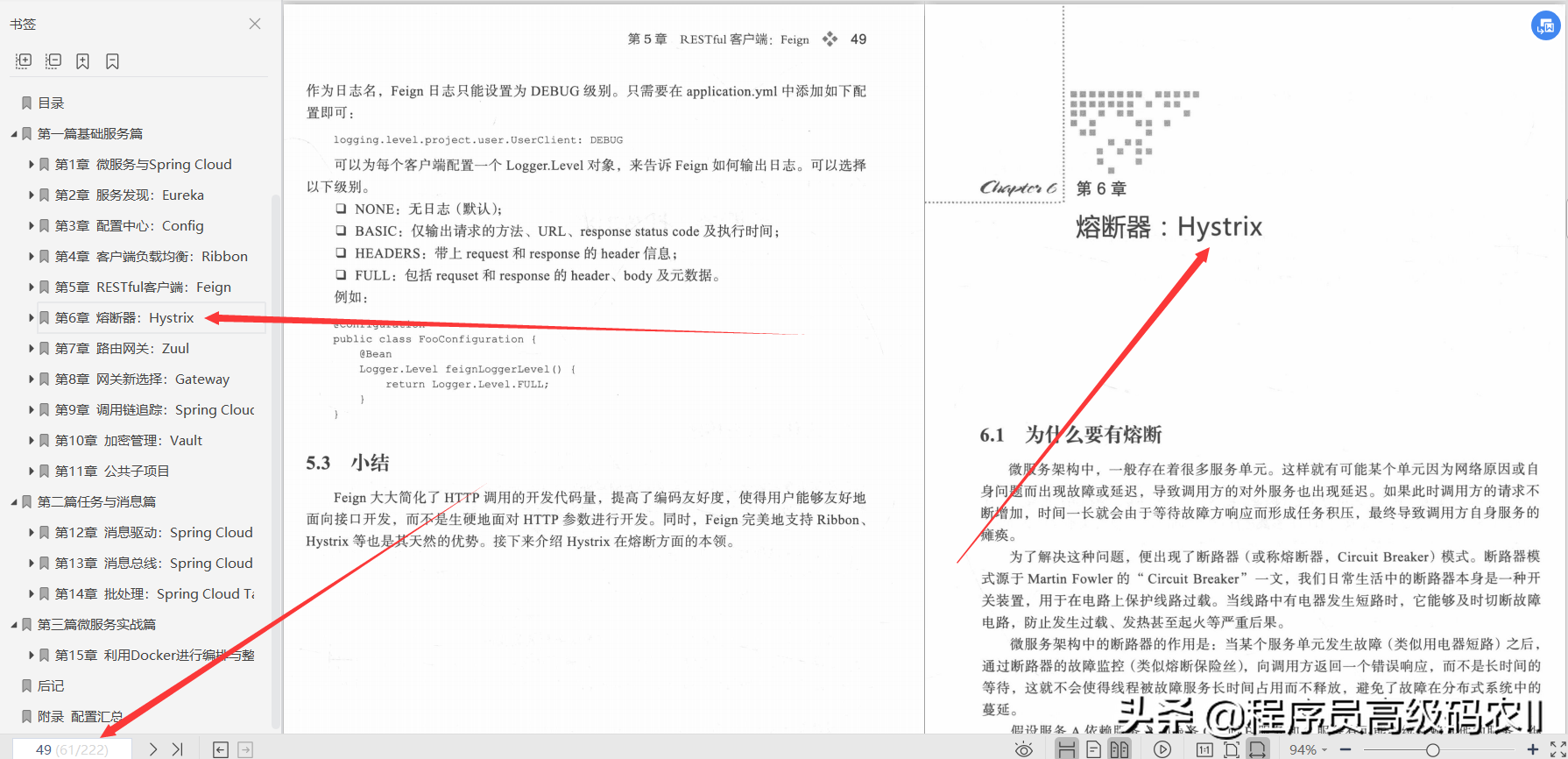
Chapter 7 Routing Gateway: Zuul; There are many distribution gateways on the market, but there are not many gateway products that have experienced the large traffic inspections of major Internet companies like Zuul and have such complete functions. In addition, the perfect integration with the Spring Cloud ecosystem makes it an indispensable key node in the microservice architecture.
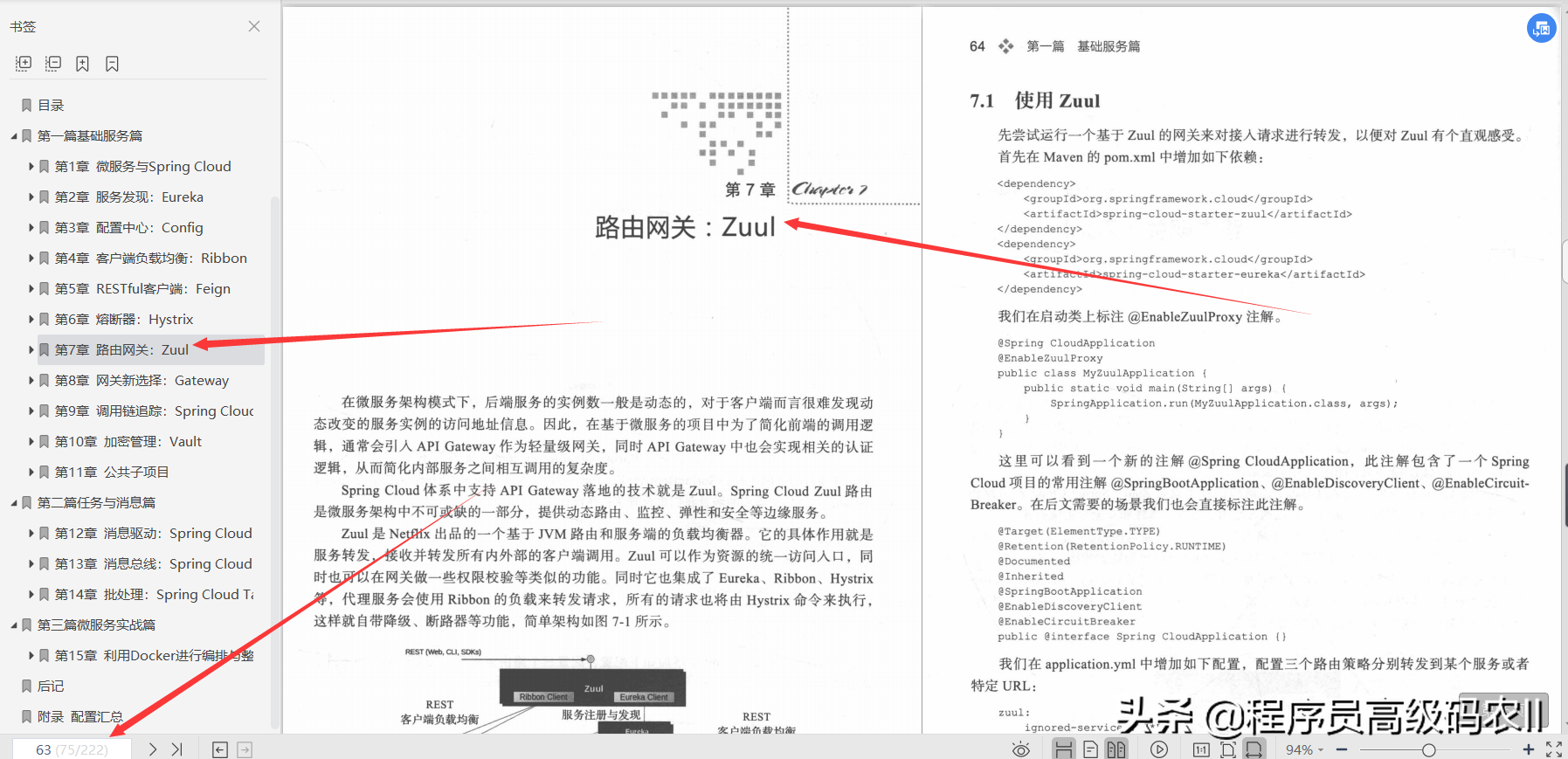
Chapter 8: New Choice of Gateway: Gateway; According to the study in this chapter, I believe that everyone has a comprehensive understanding of Gateway. Although Gateway has many new features compared to Zuul, and may have more advantages in performance than Zuul, it is not long before Gateway has left the incubator. The project itself is not mature enough and has not been tested for large-scale use, so it is recommended that you choose the gateway It is still necessary to fully consider the production environment when modelling.
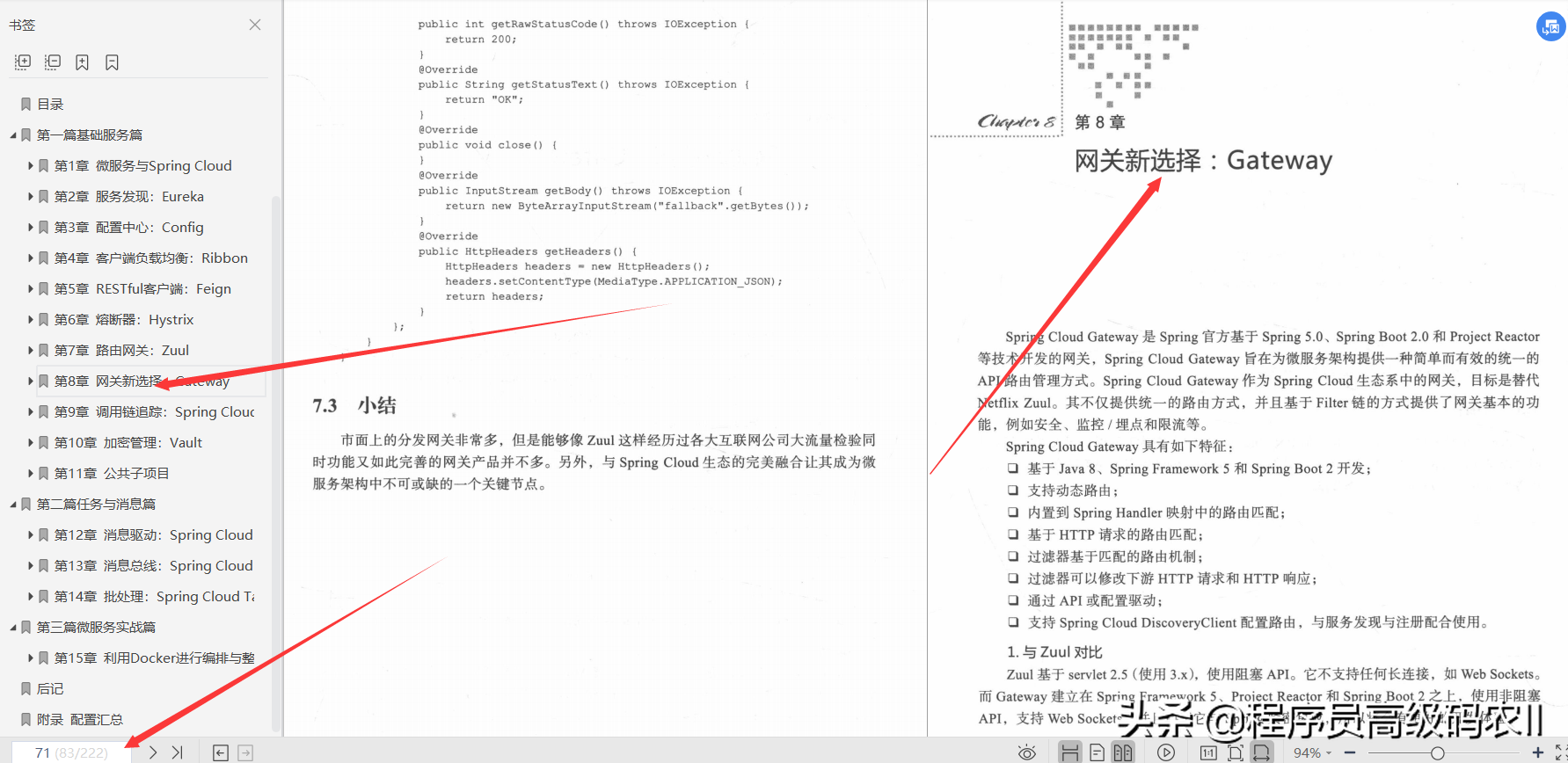
Chapter 9 Call Chain Tracking: Spring Cloud Sleuth; after learning Sleuth in this chapter, are readers eager to think about how to apply it to an enterprise-level environment? The industry's complete set of log collection and analysis solutions such as ELK, Flume, etc. . Readers can combine and choose different implementations suitable for each link of log collection, transmission, analysis, and display according to their actual scenes like building blocks.
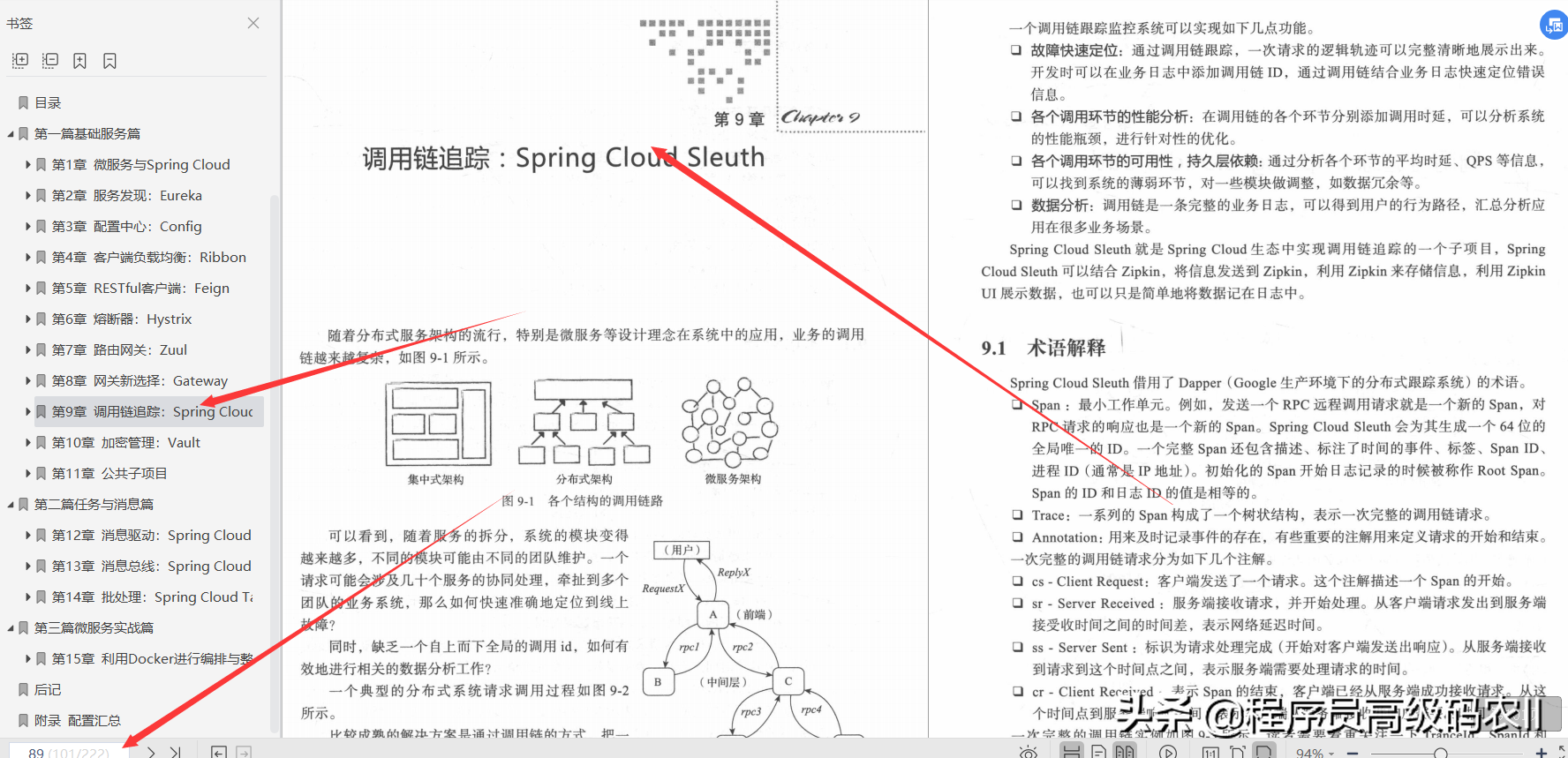
Chapter 10 Encryption Management: Vault; After studying this chapter, you should be able to use Spring Cloud Vault's protection practices for sensitive data. Then let's learn together what other practical modules Spring Cloud provides for us!
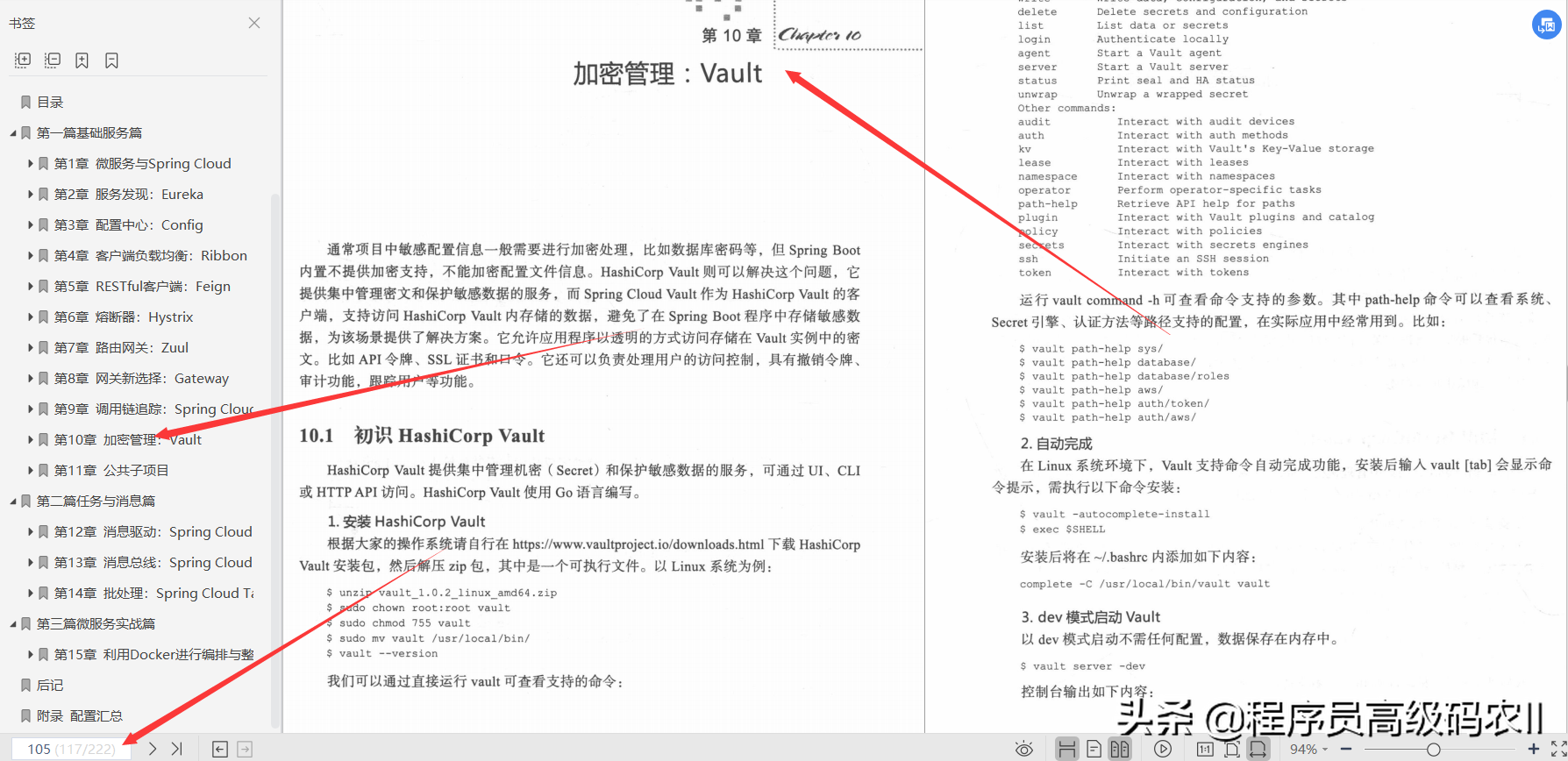
Chapter 11 Public Subprojects; this chapter introduces the implementation of a client tool and two registries. We can choose different registration centers according to different needs in specific application scenarios, and it is very convenient to use the CLI scaffolding client provided by Spring for us. At this point, the content of this article is finished, and then I will enter the second article, which introduces the components of message processing and other aspects.
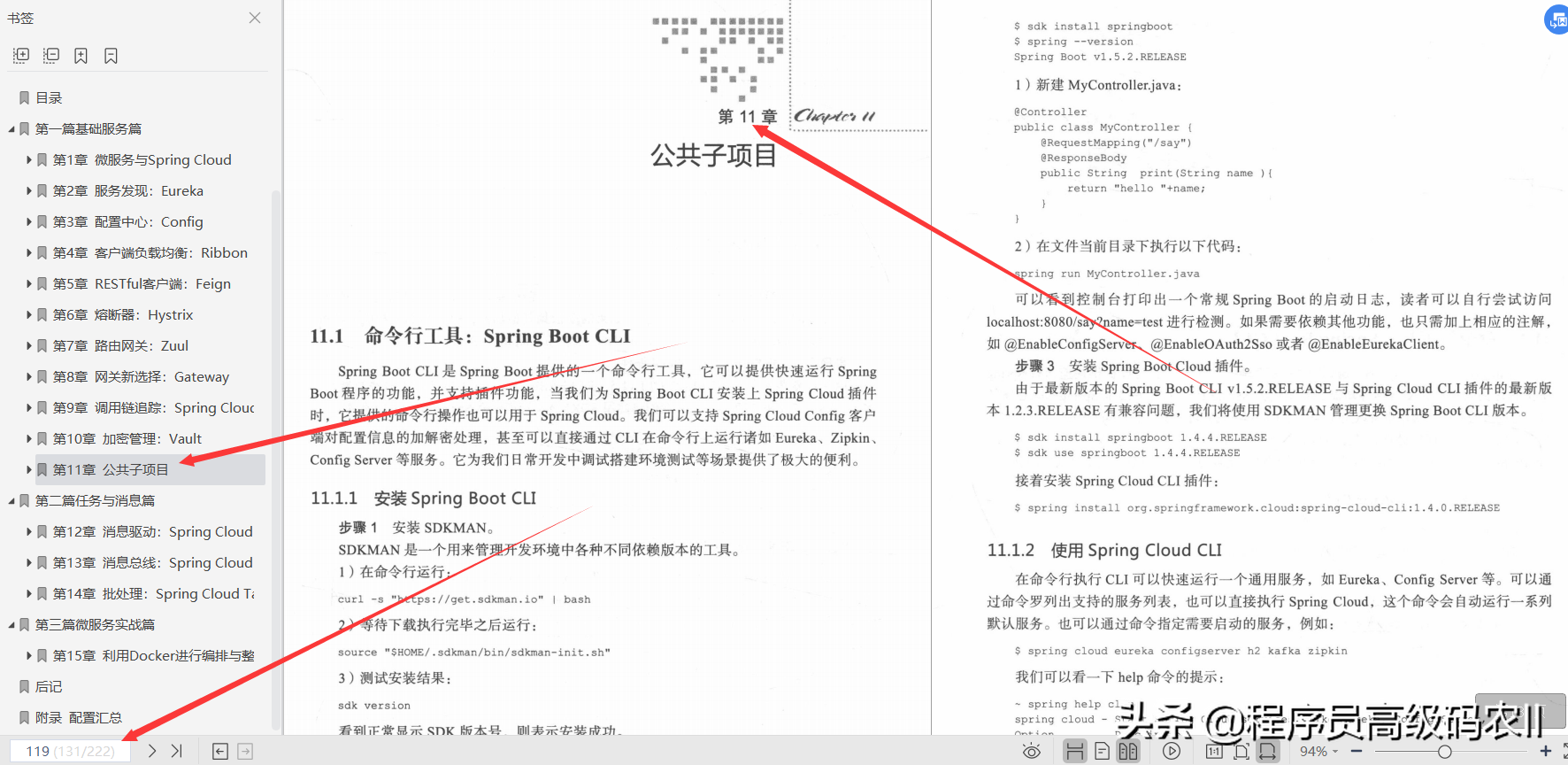
Chapter 12 Message Driven: Spring Cloud Stream; when we have Spring Cloud Stream and start to implement message-driven business scenarios, we don't need to pay too much attention to the specific implementation of specific message middleware. When developing directly for Spring Cloud Stream, we shielded the differential impact of middleware implementation on specific development, and achieved complete decoupling of business development and tool implementation. The benefits are self-evident.
The next chapter will learn how to use Spring Cloud Bus for event broadcasting.
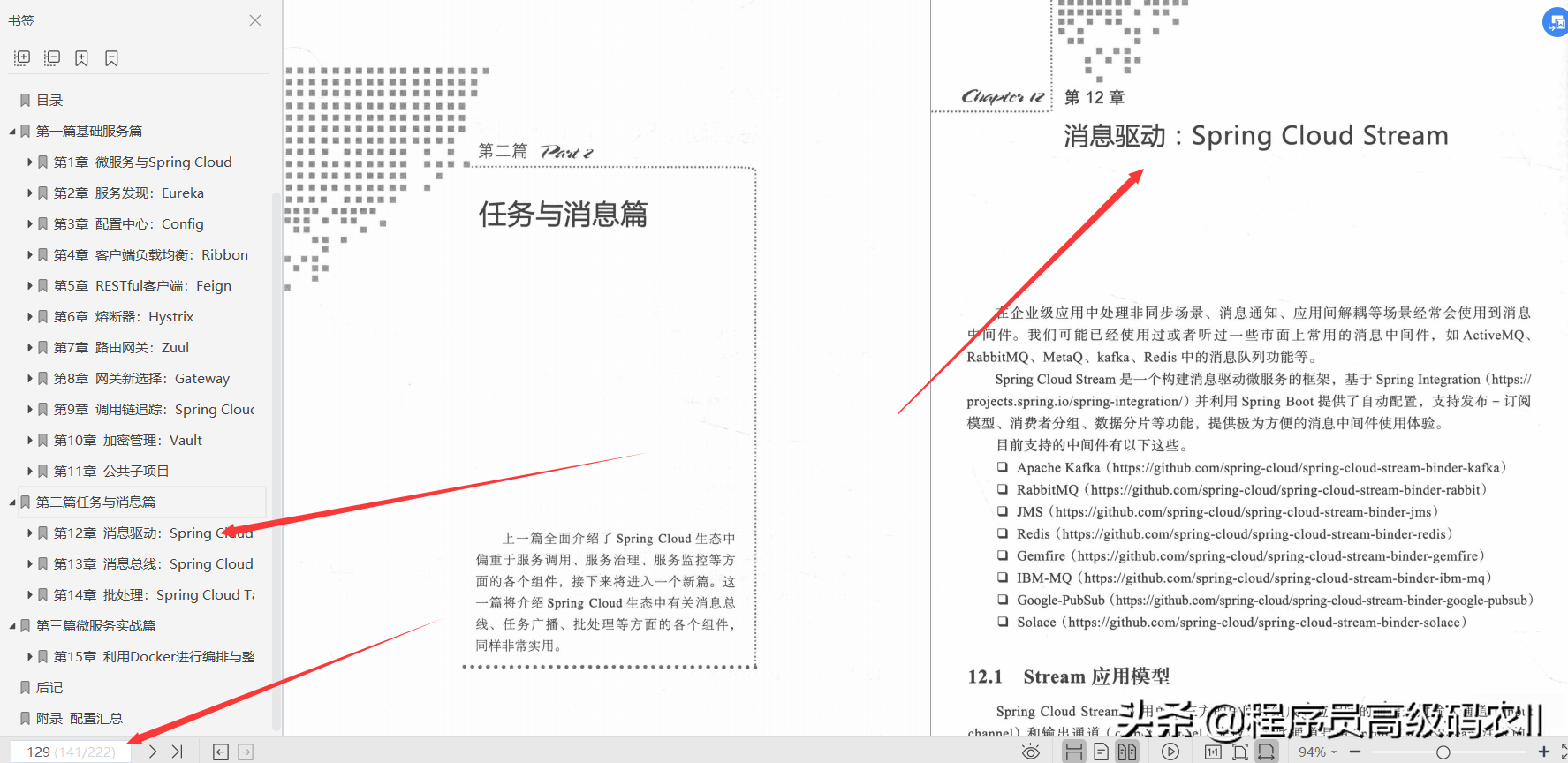
Chapter 13 Message Bus: Spring Cloud Bus; Because the message bus is widely used in the microservice architecture system, it is almost an essential component in the microservice architecture just like the configuration center. Spring Cloud Bus, as a component that controls message broadcasting in Spring Cloud, can easily build a message bus through it, and at the same time realize some common functions in the message bus.
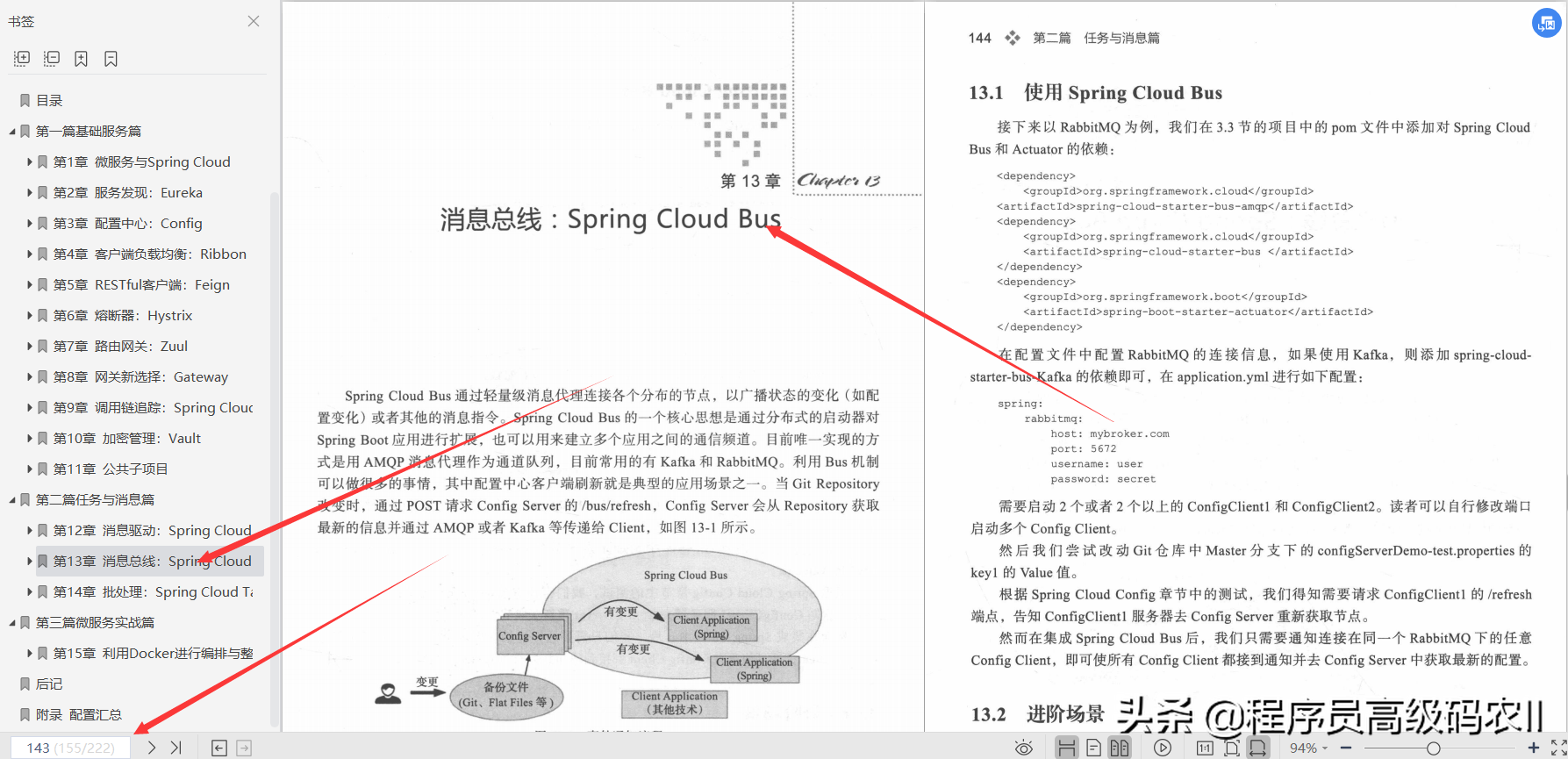
Chapter 14 Batch Processing: Spring Cloud Task; Spring Cloud Task helps to create short-time running microservices more easily. The Spring Cloud team provides basic technical support for the needs of running short-term applications on the JVM. Projects developed by it can be started in the local cloud or Spring Data Flow. Through the study of this chapter, you can understand the overview, purpose and usage of Spring Cloud Task, as well as the design philosophy of Spring Cloud Task.
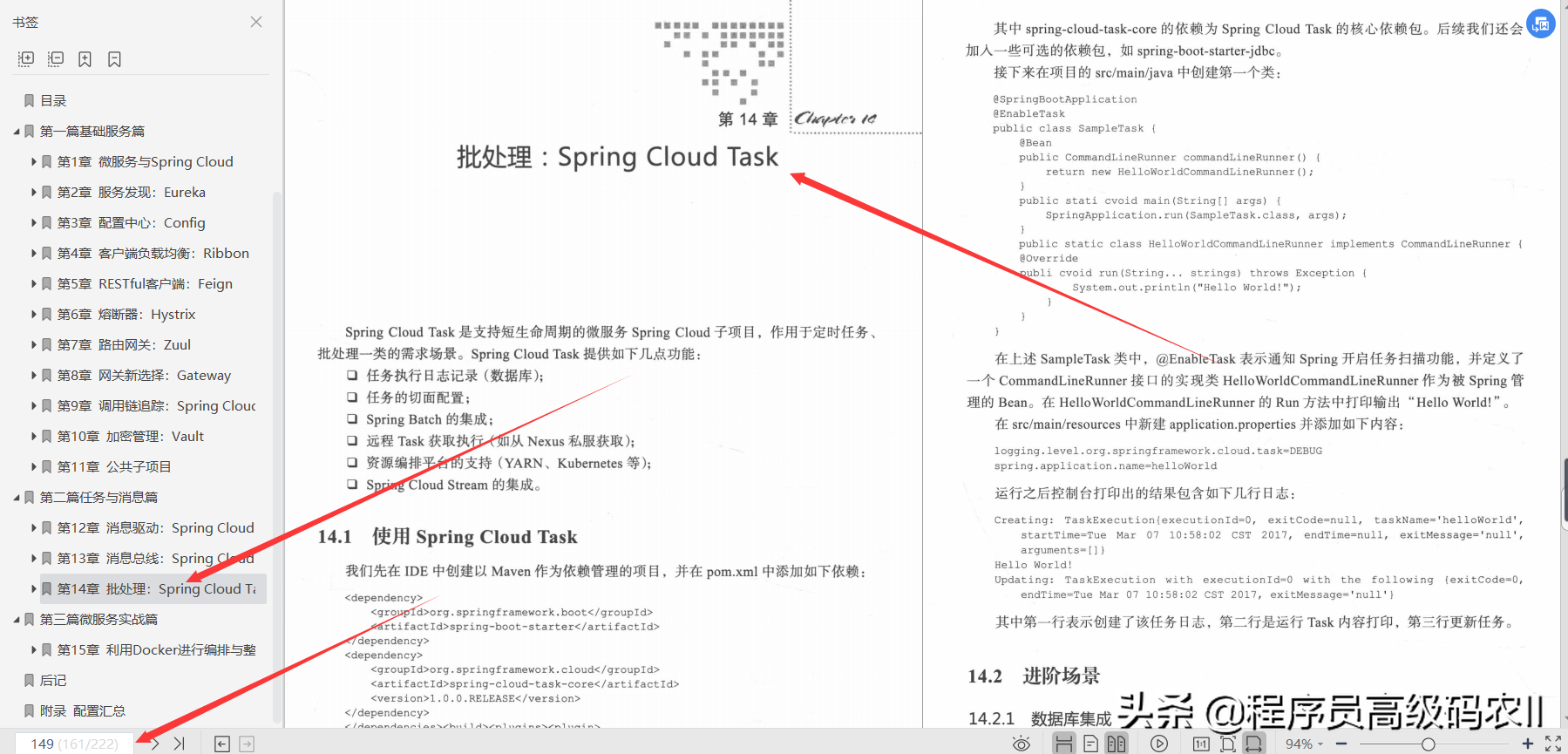
Chapter 15 uses Docker for orchestration and integration; this chapter connects the core components of Spring Cloud through a simple project case, integrates the service authentication function, and encapsulates it in a Dockerized form. I hope this chapter will enable readers to get a deeper and more practical understanding of Spring Cloud in actual combat, and guide readers who have not been exposed to Docker.
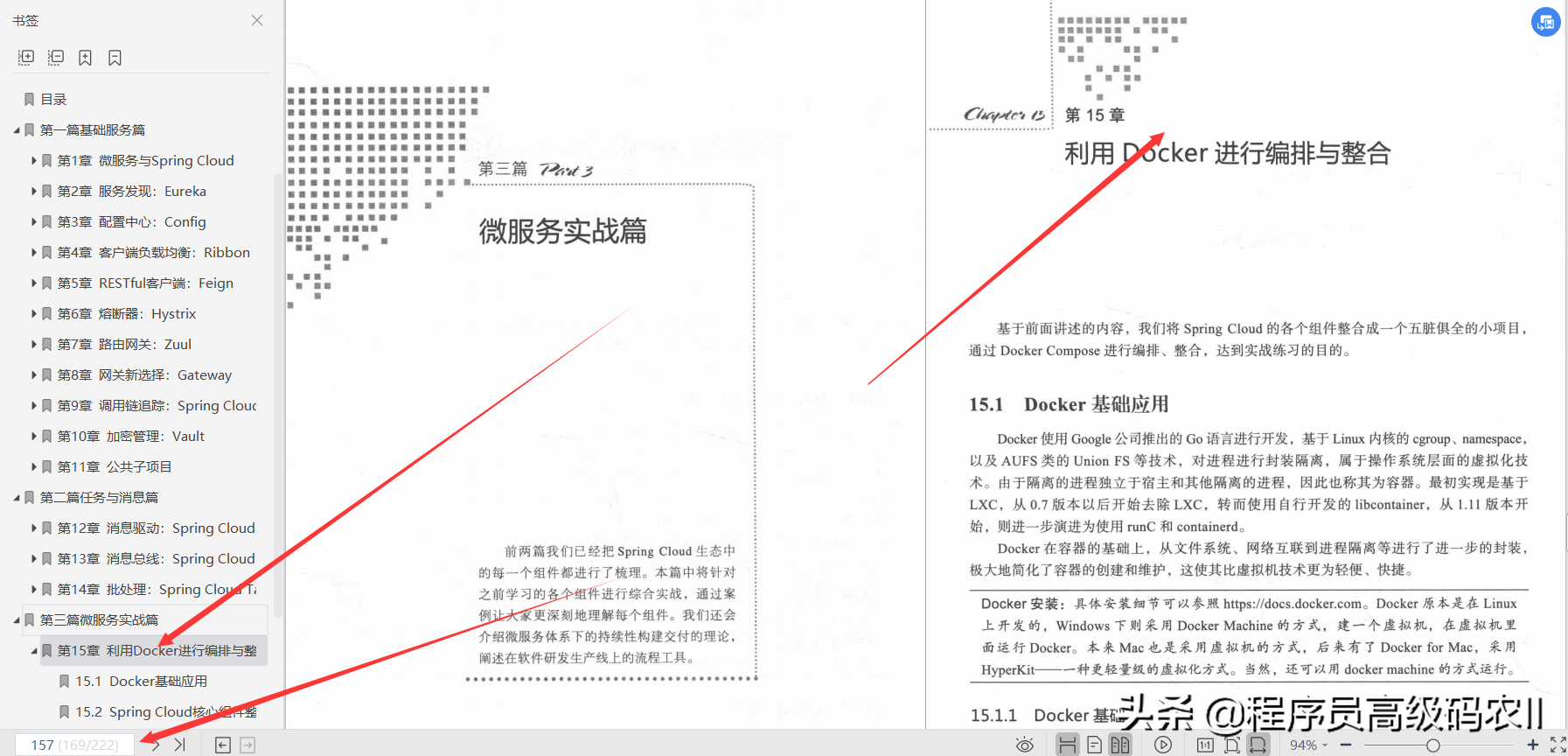
There are a total of 222 pages in this [Minimal springcloud combat]. After forwarding this article and following the editor, scan the code below to get it!
to sum up
This article not only introduces the background of microservices and the value of the Spring Cloud technology system, but also allows readers to quickly understand the whole picture. It also provides a detailed explanation and in-depth analysis of the various components of Spring Cloud at a detailed level. Finally, from the perspective of microservices technology, combined with the current Popular containerization and CI/CD technologies introduce the future operation and maintenance form and development direction of microservices, and truly let readers know what it is, why it is, and its future.
After reading the excellent technical documents, it feels like tasting a mellow wine with a complex but distinct taste. This article can also bring you this feeling.
I hope you can work hard to understand the large amount of knowledge that this article brings to you, and I hope you can master and use it flexibly to improve the depth and breadth of your technology, and I hope this article can be liked by everyone! ! !
